The Japandi style is an interior design trend that blends Scandinavian functionality and Japanese minimalism. This fusion creates the perfect combination of function and form, focusing on clean lines, bright spaces and neutral colors. Also present in this style are the touches of the imperfection of the Wabi-sabi philosophy and Hygge –a Danish word that reflects comfort and warm.
The harmony in this style is due to the fact that Denmark and Japan share similar ideas about minimalism and comfort, in addition to the respect for handmade pieces, quality in the manufacture of products and natural materials, mainly wood.
The Japandi style has some basic design principles, which can be adapted to our interior spaces.
1- Neutral color palette and contrasting colors
The color palette of the Japandi style is in neutral and light tones: white, beige or gray. This is part of the Scandinavian style that seeks to generate warm and bright interiors. On the other hand, the influence of the traditional Japanese style allows combining neutral tones with contrasting details in dark colors: indigo blue, browns, plums, greens and even black. This set of different tones can be applied to a wall, furniture, accessories or textiles.
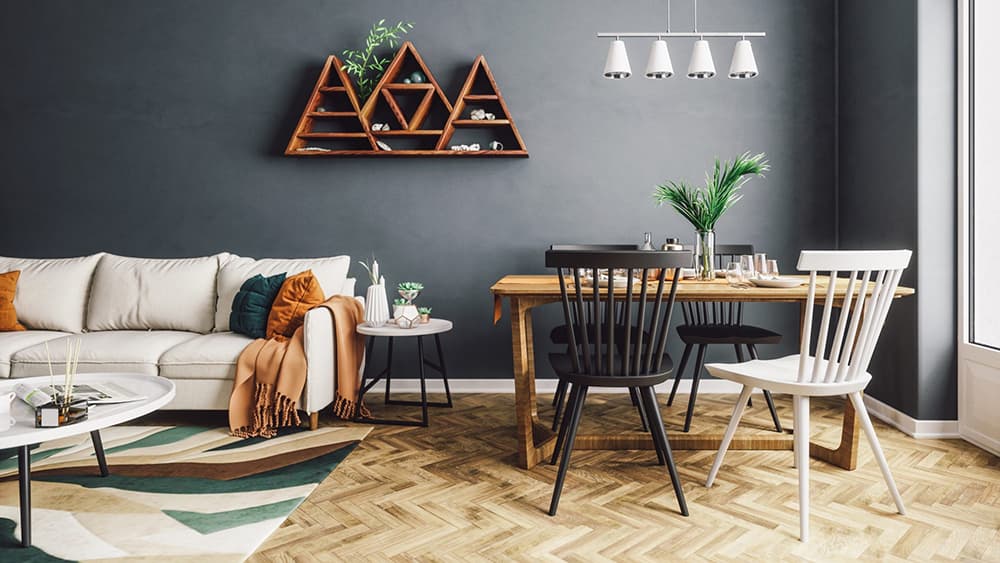

2- Materials and textures
The Japandi style favors natural materials and different textures. Wood in light tones is the main element in both Japandi and Danish design. Natural materials in textiles such as hemp, wool or linen can be combined with each other and used in carpets, curtains and cushions. Cork or bamboo are excellent choices for wall or floor surfaces. The Japandi style also incorporates durable materials such as iron and marble; stone and ceramics are found in vases, pots and other accessories.
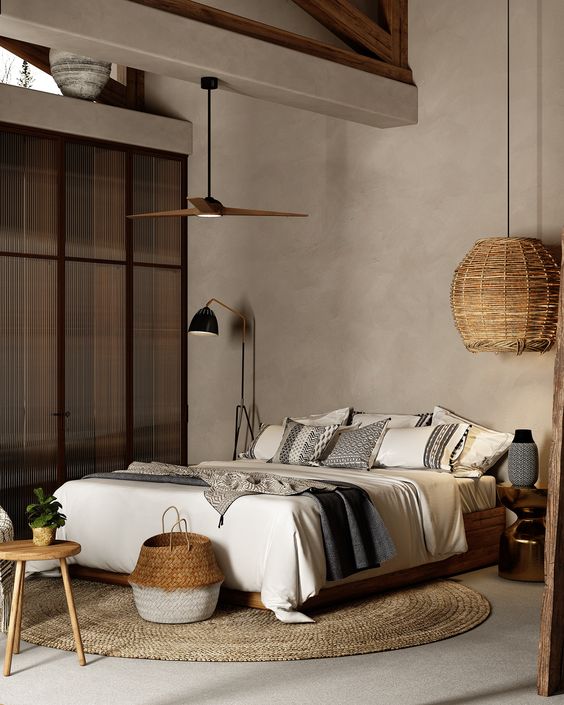 |
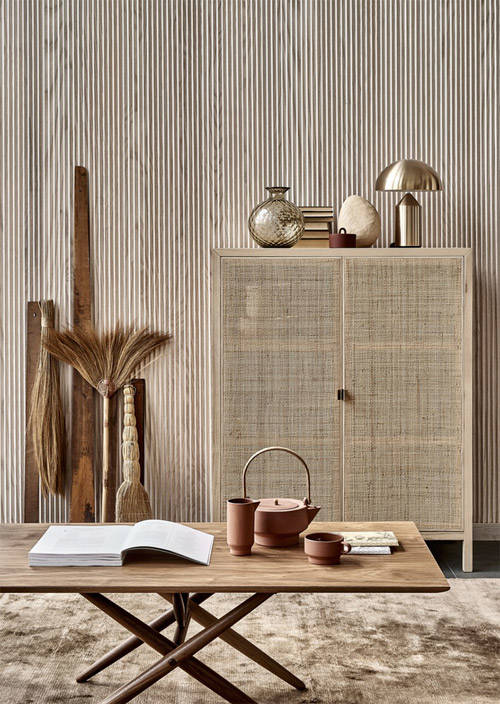 |
3- Indoor plants
Contact with nature is necessary in the Japandi style, in fact becoming an essential element to create harmony with the rest of the natural materials. Colored flowers are not used, but plants such as ficus, ferns, vines or bonsai are.
Tall flower arrangements are favored on tables and consoles. These flower arrangements have few elements and combine dry branches, green leafy plants and flowers such as orchids or cherry blossom. This style of arrangements is called Ikebana, and is part of the Japanese design.

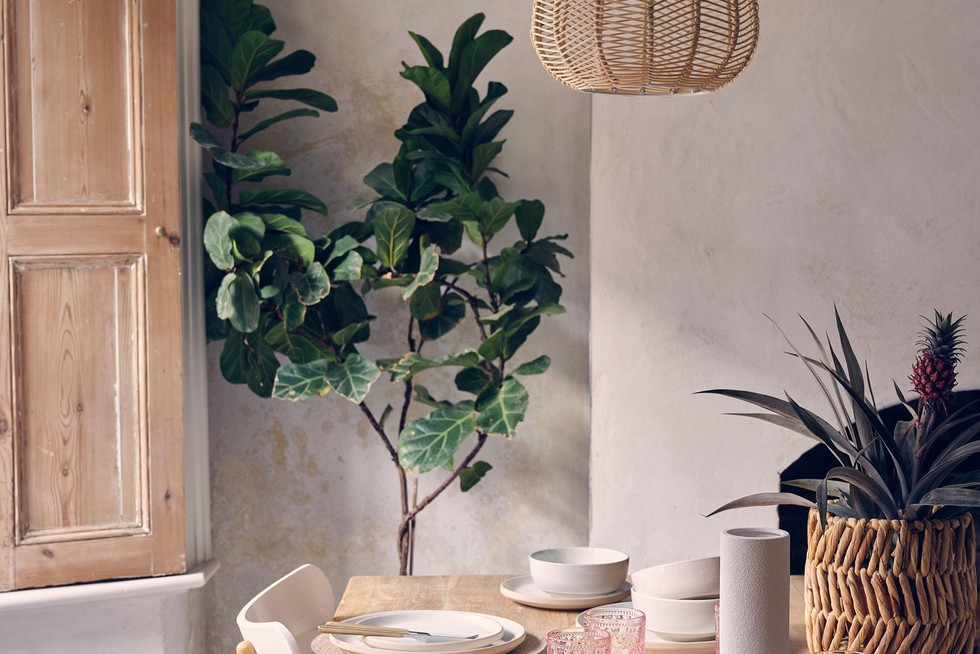
4- Orderly Spaces
The Japandi style seeks the constant flow of air and light. The spaces are open with a limited number of objects that are deemed essential. Purposeless accessories are discarded to keep surfaces clean and tidy. In this style, it is common to add low furniture, which generates a feeling of spaciousness.
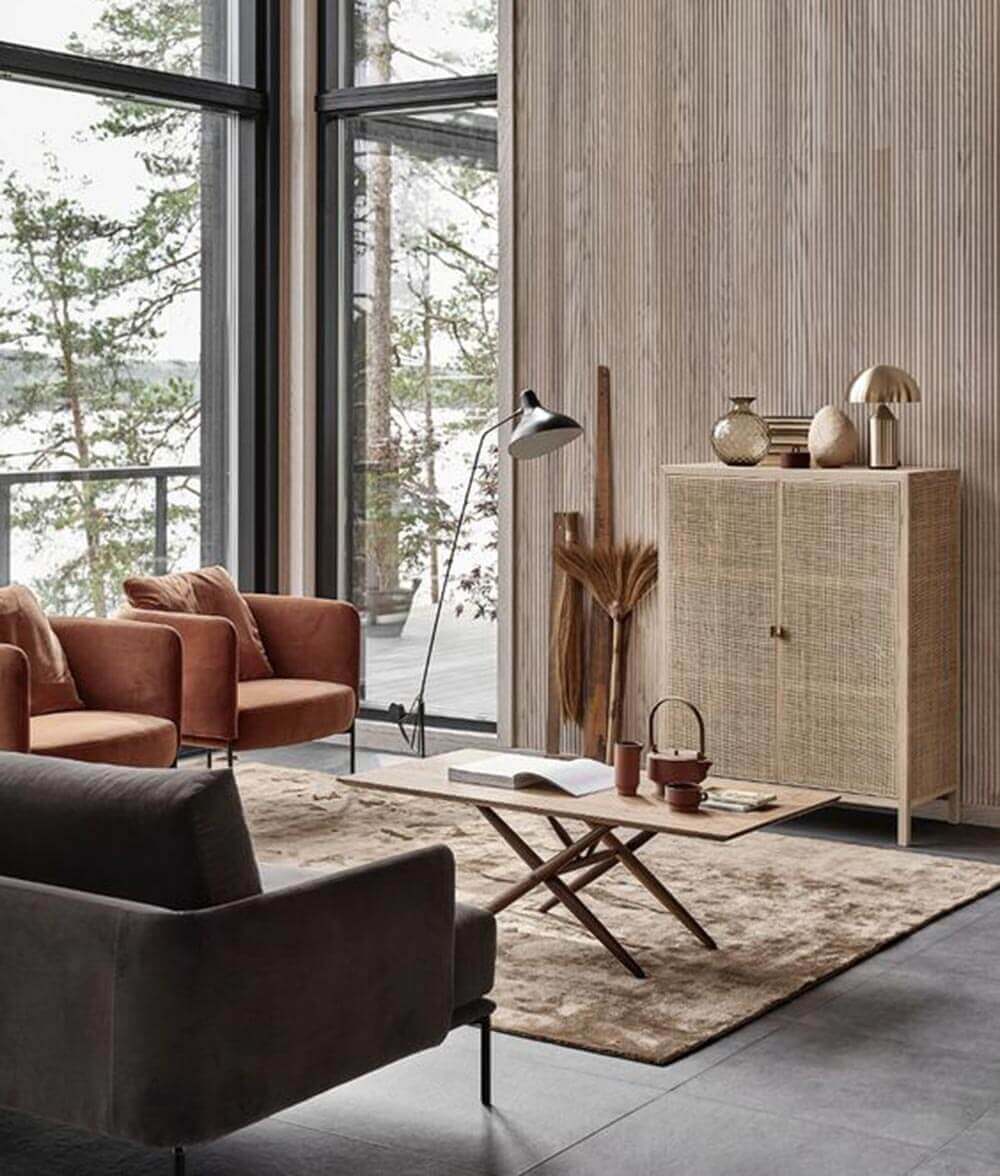
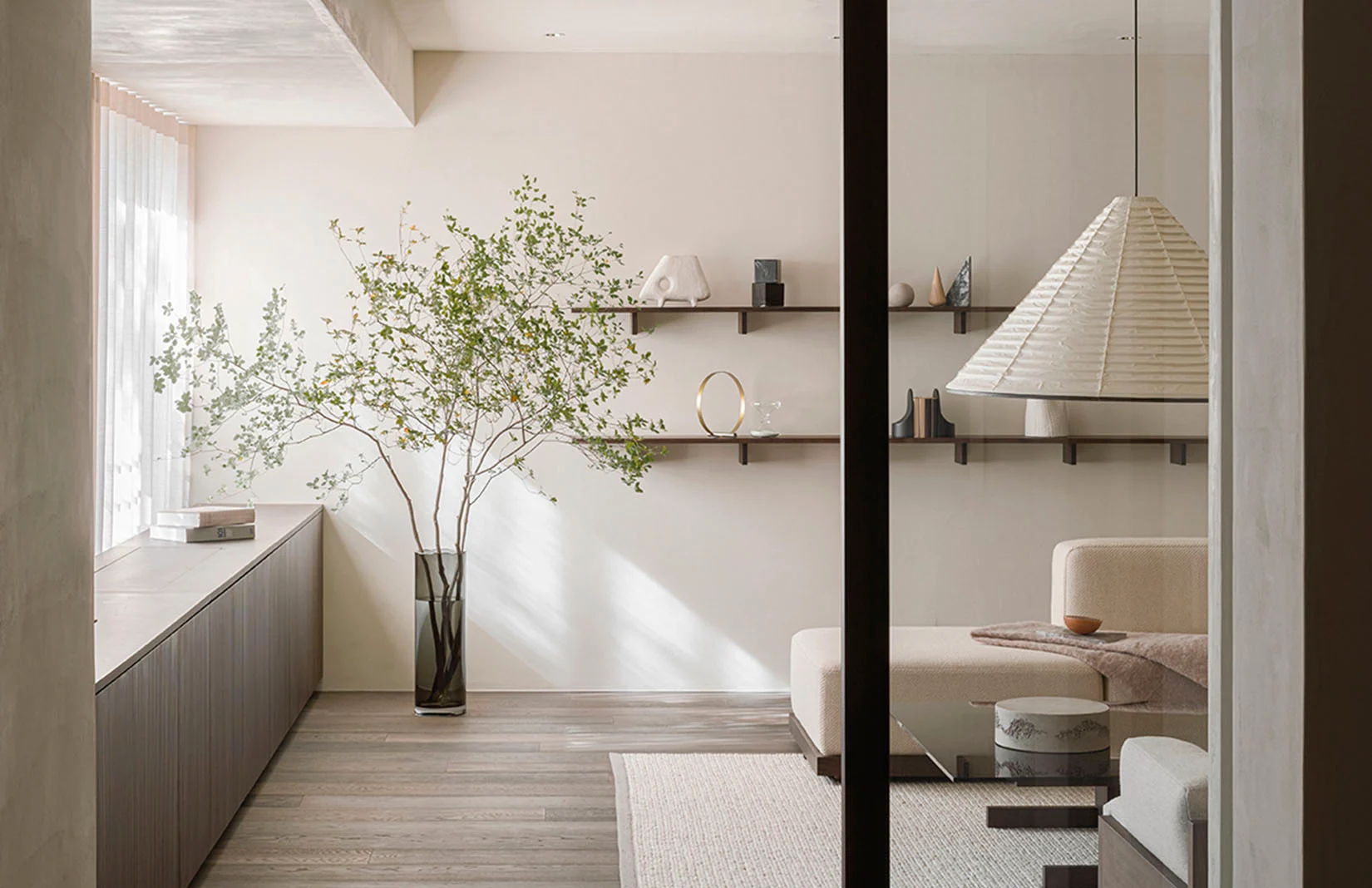
5- Crafts and ceramics
Ornaments have minimalist and simple shapes, preferably handmade with natural materials. The vases, pots or ceramic bowls are important in the Japandi decoration. These do not seek to be perfect: following the Japanese Wabi-Sabi philosophy, such objects are allowed to have some fissures, display some natural deterioration or be rustic –hence the beauty of these objects is born.
Within the Wabi-sabi philosophy there is the Kintsugi technique. When an object breaks, it is fixed with a mixture of resin and gold powder, used to fill cracks and holes. The joints are visible and not perfect, but the object becomes something unique and special.
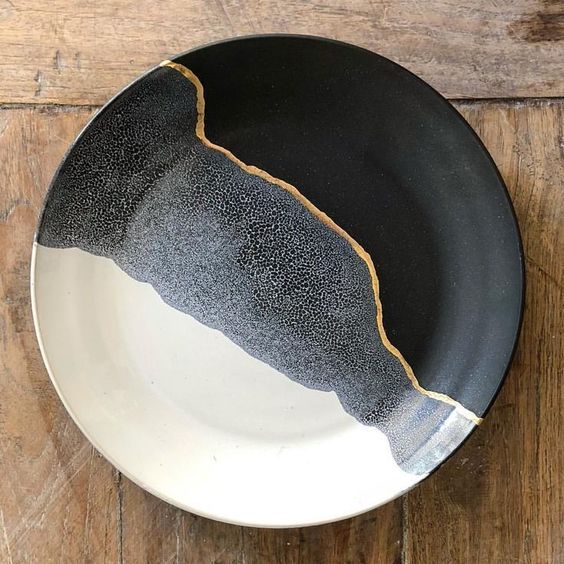 |
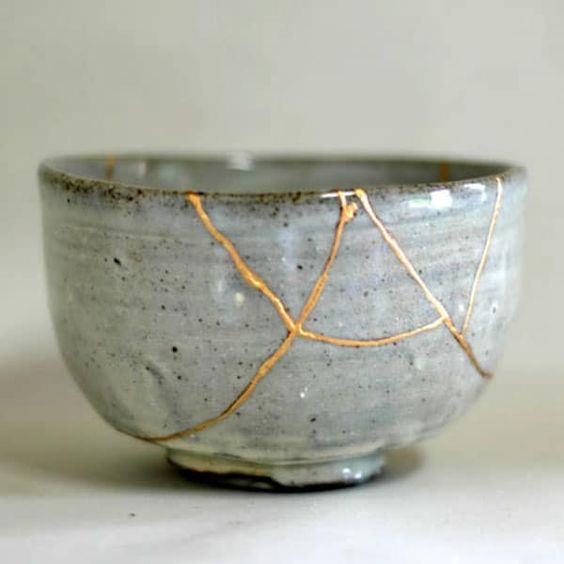 |
